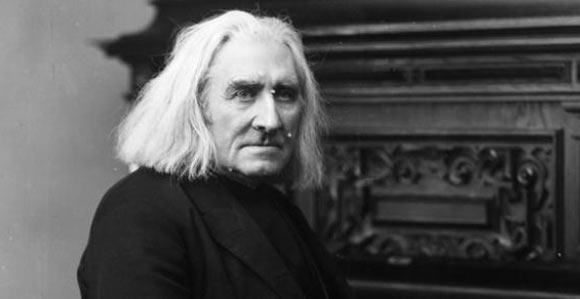
When it comes to legendary piano players, Franz Liszt’s name seems to be mentioned the most. A nineteenth century virtuoso pianist and composer, Liszt was known to be one of the most technically advanced pianists of all time. Liszt was also known to be benefactor to esteemed musicians, including Camille Saint-Saens, Edvard Grieg, and Richard Wagner.
Franz Liszt was born on October 22, 1811 in a village in Doborjan, Kingdom of Hungary. Liszt’s father was a respected musician who was well versed in piano, violin, cello and guitar. Liszt’s father spent his life in service to Prince Nikolaus II Esterhazy and by nature of his work, he knew many great musicians personally, including Joseph Haydn and Ludwig van Beethoven. Liszt exhibited an interest in his father’s music at the age of six, and by the age of eight, he was studying the piano with his father. At age nine, Liszt performed at a concert in Sopron. The attendees of the concert were so impressed with Liszt’s musical ingenuity that they offered to pay for Liszt’s musical education abroad. It was said that Liszt’s ability to keep absolute tempo at such a young age was a mark of brilliance.
Liszt went on to receive piano lessons from Carl Czerny, who had previously been a student of Johann Nepomuk Hummel. He was inspired by the great violin virtuoso Niccolo Paganini, and after attending one of his concerts in 1832, Liszt was determined to become as great a virtuoso on the piano as Paganini was on the violin. He was rivaled by Sigismond Thalberg and Alexander Dreyschock. Thalberg, Dreyshock and Liszt were some of the few pianists that were credited with the “Flying Trapeze” school of piano playing, an age that would solve many of the pressing problems in piano technique at that time, thus raising the standard of piano playing to unprecedented levels.
In 1834, Liszt wrote “Harmonies poetiques et religieses” and a set of three “Apparitions”, which many regarded to be Liszt’s first works as a true virtuoso. Liszt also spent about eight years of his life as a touring virtuoso. It was said that he appeared in concert more than a thousand times while he toured Europe. Liszt’s charismatic performances and illustrious persona helped Liszt achieve legendary status. The outstanding level of admiration for his concerts gave way to a phenomenon known as “Lisztomania”; a phenomenon that was comparable to the hysteria that followed Elvis Presley during his golden years. What added to Liszt’s standing was that he offered support for various humanitarian causes. It was said that almost all of the proceeds from his concerts after 1857 went entirely to charity. Not only did he promote the music of various artists and composers, he also supported the Hungarian National School of Music, the Beethoven Monument, the Cologne Cathedral and the Gymnasium at Dortmund. He was also an avid donor to many hospitals and schools.
Liszt’s own compositions include the “Annees de pelerinage”, “Album dun voyageur”, and “Tre sonetti di Petrarca”, among many others. He was also known for transcribing a wide array of music for the piano, this included works of Robert Schumann, and of symphonies of Berlioz and Beethoven.
Franz Liszt died on July 31, 1886 in Bayreuth. Today, he is remembered as one of the greatest piano virtuosos of all time.